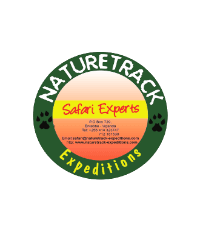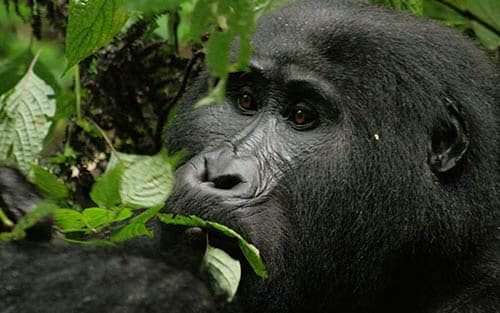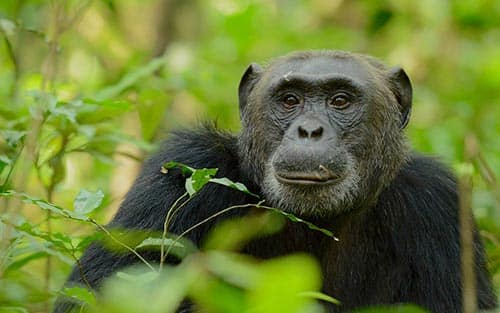Queen Elizabeth National Park
Famous for its Boat Launch Trips, Tree Climbing Lions & Kyambura Chimps
Queen Elizabeth National Park contains about 770 square miles (1995 km²) of tremendous scenic variety, including volcanic craters and crater lakes, grassy plains, swamps, rivers, lakes and tropical forest. The snowcapped Ruwenzori Mountains lie to the north and are not part of the park itself. The park is being extended to give migratory species more protection while moving to and from Virunga National Park in the Congo.
A two-hour launch trip on the Kazinga Channel, which joins Lakes Edward (Lake Rwitanzige) and George, affords excellent opportunities for viewing wildlife on the shores like hippo and a great variety of waterfowl at close range. The launch trip departs from just below Mweya Lodge and should not be missed.
The Katwe-Kikorongo area in the north of the park has several saline lakes.
The Kyambura Gorge, located on the northeast boundary of Queen Elizabeth National Park, has a population of chimpanzees. Chimp Trekkers descend from the savannah into a tropical rain forest within the gorge.
South of the Kazinga Channel, the Maramagambo Forest is home for large numbers of chimpanzees, black and white colobus monkeys, the rare red colobus monkeys, blue monkeys, red-tailed monkeys and baboons. The Ishasha region in the south of the park is famous for its tree-climbing lions.
Elephant are present, as well as buffalo, leopard, sitatunga, giant forest hog, Uganda kob, topi and Defassa waterbuck. Over 540 species of birds have been recorded, including the rare prehistoric-looking shoebill (whale-headed stork), which may be sighted along the shores of Lake George and in the Ishasha region.
Interestingly enough, there are no giraffe, zebra, or impala, rhino in Queen Elizabeth National Park and only a few crocodile have been sighted in the Kazinga Channel, while none have been seen in Lakes Edward or George. The crocodiles are believed to have been killed long ago by volcanic activity.
From Kampala the Queen Elizabeth National Park is 260 miles (420 km) via Mbarara and 285 miles (460 km) via Fort Portal. A landing strip is located at Mweya for light aircraft; larger planes can land at Kasese which is located 30kms from Queen Elizabeth National Park.
Best Time To Visit
June, July, August and September are the peak months as they are generally dry (though rain can fall at any time), and coincide with school holidays. This is the best time to visit Uganda, but book well in advance, especially if tracking gorillas – as gorilla permits will sell out months in advance. Read More
Our Most Popular Uganda Safaris
Tailored to suite your travel style and calendar
UGANDA SAFARIS
There's not just one way to travel. There just as many different ways to explore a new place as there are travelers in the world.
We've made this inspirational page to help you more clearly imagine and then create your ideal trip, making it easier to choose the perfect vacation that fits your needs.
Would you rather travel solo and off the beaten path, or do you want a guide to take you through some of the most famous sites in the world? Can't imagine going more than a few hours cut off from the world, or are you dreaming of wide open spaces without another person in sight?
Whatever you prefer, you can find it and more in the dozens of travel ideas for every continent prepared by our local agents. Take a look and find out which one inspires you!
























